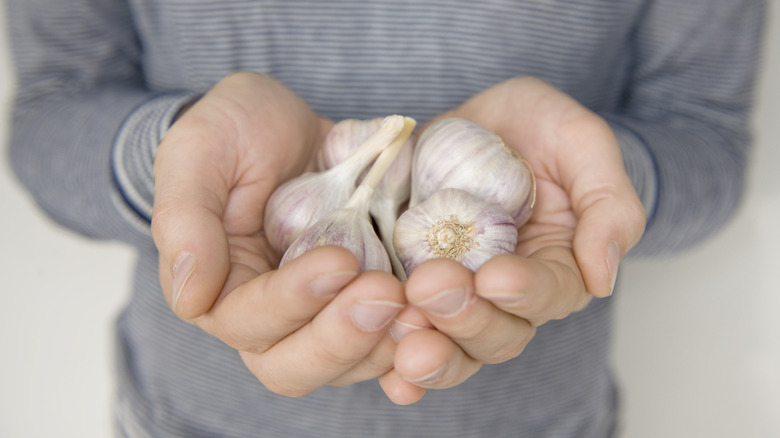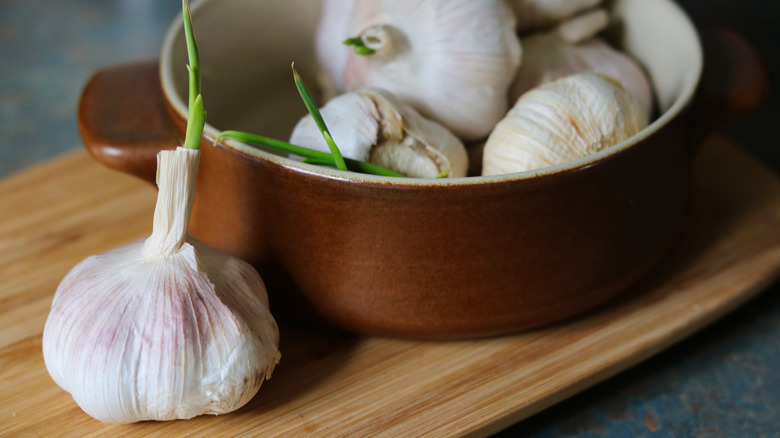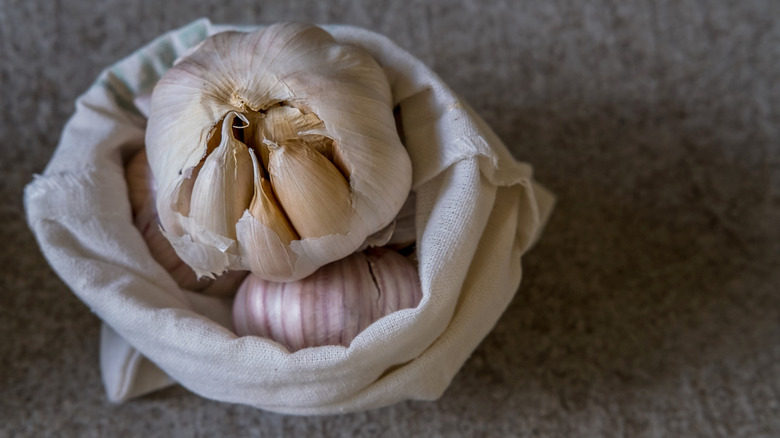Here's Why Your Garlic Is Green In The Middle
There is nothing like fresh garlic sizzling in olive oil — and sorry not sorry, but the jarred stuff, while convenient, just isn't the same. It does take some prep work to get to the sizzling-in-the-pan moment, though, especially all the peeling and chopping you have to do to get your garlic finely minced. Then there is the dismay when you cut into a garlic bulb and find bits of greenery hanging out in the middle. What the heck is that stuff?
The green bit that appears inside individual garlic cloves is called the germ, and it's actually the garlic sprouting, or getting ready to grow new garlic. If you were to leave your garlic alone and let the germ continue to grow it would even sprout out the top of the bulb. The germ typically appears when the bulb is getting old, but it can also occur if fresher bulbs are kept near moisture or humidity.
Can you eat the garlic germ?
The garlic germ is completely safe to consume, but you might find that in older bulbs it tastes bitter or has a seriously pungent bite, especially when eaten raw. So, if you're using raw garlic as an ingredient in a salad dressing, you might want to remove the germ to avoid unpleasant flavors. If you're cooking with garlic, however, the difference between leaving the germ or removing it is negligible. The stronger flavors will not be noticeable once cooked, so it's really up to you whether you choose to remove the germ or not.
There is also some research to suggest that eating sprouted garlic has health benefits. A study from 2014 found that garlic which contained germs was higher in antioxidants, with sprouts that were five days old containing the most antioxidants. So, you could possibly give your body a boost by keeping the garlic sprouts around and eating them.
The best way to store garlic to help prevent sprouting
Whatever you've done with the garlic germ in the past, there are steps you can take to stop your garlic from sprouting for as long as possible. The very best place to store garlic is in a cool, dry, and dark pantry. If you don't have a pantry, you can keep your garlic inside the fridge, though that's best only for peeled or chopped garlic. If you opt to store whole garlic heads in there, you'll want to make sure they're kept in a mesh produce bag so that some air can get to the cloves.
As mentioned, the germ is more likely to grow in humid environments, so be sure to keep your garlic away from any damp or humid areas in your kitchen. Fresh garlic should not be stored near any appliances that put out heat, like the oven or refrigerator, or near windows that get a lot of sun. You should also be aware that placing garlic near ethylene gas-producing fruits like bananas can kickstart germ development.


